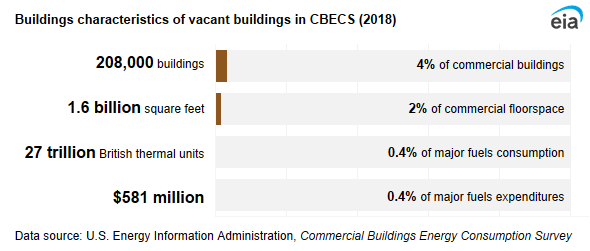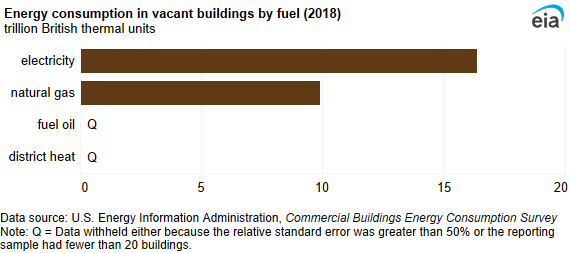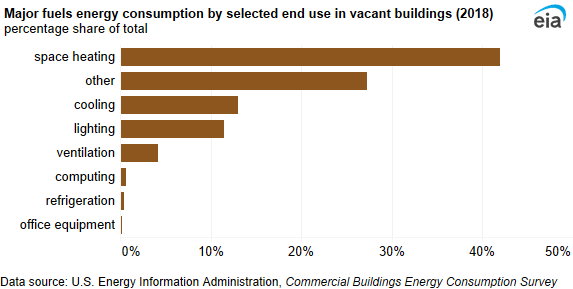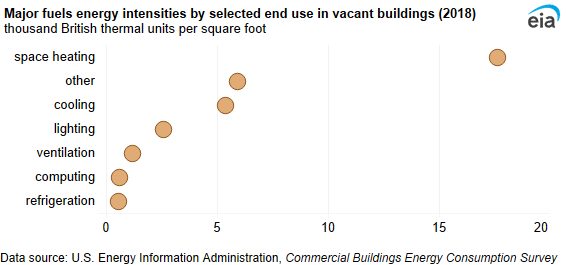 2018 CBECS: Principal Building Activities
2018 CBECS: Principal Building Activities
Vacant
Vacant buildings are buildings in which more floorspace was vacant than was used for any single commercial activity at the time of interview. Therefore, a vacant building may have some occupied floorspace.

We do not publish subcategories of vacant buildings.
The majority (93%) of vacant buildings were less than 10,000 square feet. Less than 1% of vacant buildings were 100,000 square feet or larger. On average, vacant buildings were 7,800 square feet per building.

The majority (82%) of vacant buildings were constructed before 1990. About one-third of vacant buildings were constructed before 1960.

We asked building respondents if their building was completely vacant. By CBECS definition, a building must be 75% vacant to be considered a vacant building. The majority (82%) of vacant buildings were completely vacant.

Energy use in vacant buildings
Vacant buildings used 27 trillion British thermal units (TBtu) of energy in 2018. Vacant buildings accounted for 2% of total commercial floorspace and less than 1% of energy consumption in commercial buildings. Similar amounts of electricity (16 TBtu) and natural gas (10 TBtu) were used. The mean energy intensity for vacant buildings was 16.8 thousand British thermal units (MBtu) per square foot.

Space heating accounted for the largest share of end-use consumption in vacant buildings (42%). Other (27%), cooling (13%), lighting (12%), and ventilation (4%) were the only end uses that were statistically significant and did not round to 0%.

Energy intensity was highest for space heating (17.6 MBtu per square foot) and lowest for refrigeration (0.5 MBtu per square foot). The water heating and cooking energy intensities were not statistically significant.

Inside vacant buildings
The majority of vacant buildings did not use any heating or cooling equipment. Packaged heating units were used in 8% of vacant buildings and packaged air-conditioning units in 14%. Packaged heating and air-conditioning units were the only statistically significant heating or cooling equipment types used in vacant buildings.



 /p>
/p>